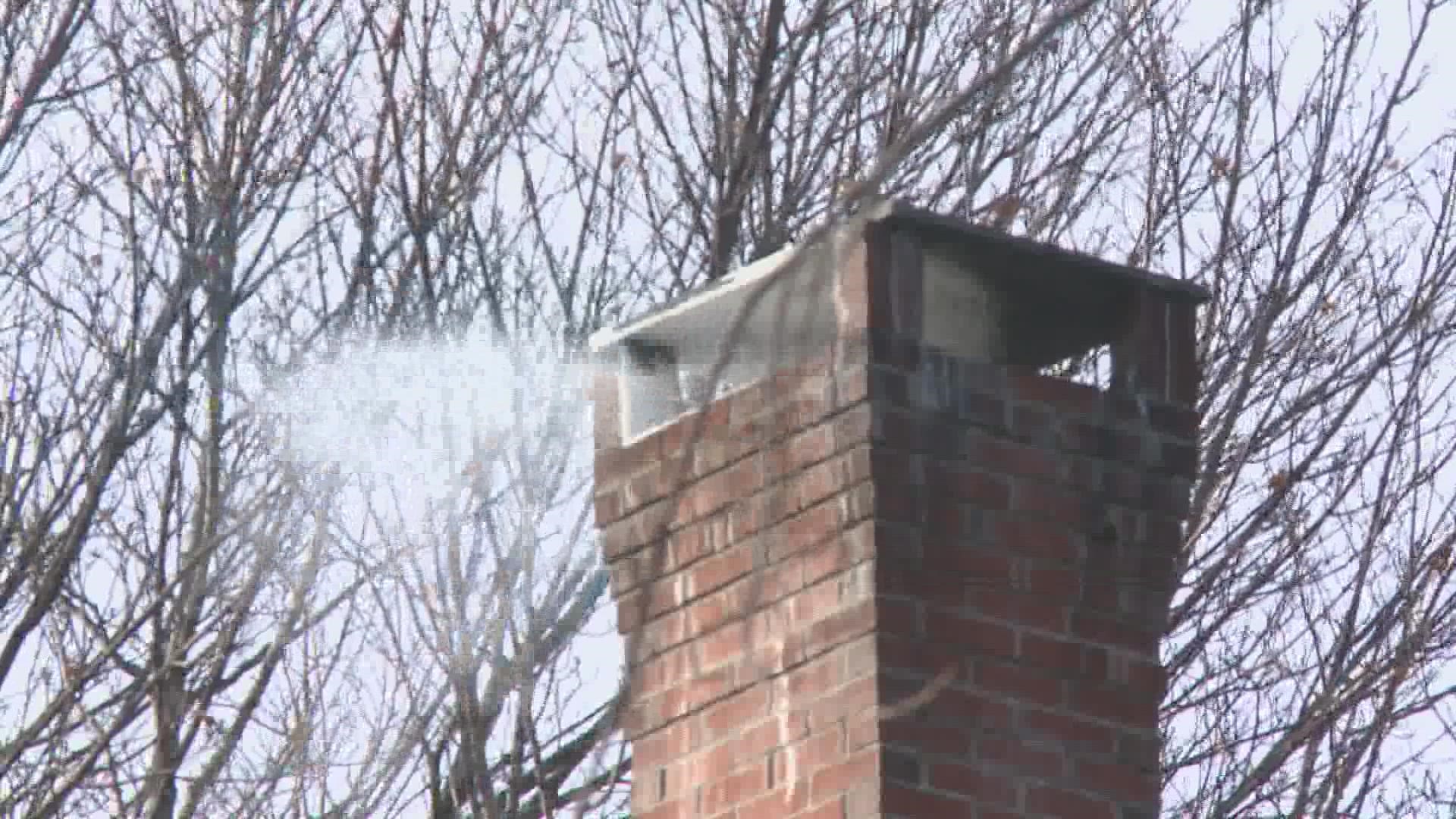PORTLAND, Maine — NEWS CENTER Maine has done several stories on electric vehicles over the past year or so, but that explains just one way to reduce greenhouse gas emissions.
Keeping our homes heated and cooled in Maine is another major source of emissions. Who are we kidding? We're talking mainly about heating our homes, especially this time of year.
While 54 percent of greenhouse gas emissions in Maine come from transportation, making it the biggest contributor, residential heating/cooling comes in second at 19 percent.
According to a study by the University of Michigan, Maine has the highest average household energy intensity in the country.
What is “energy intensity?” Researchers defined it as the amount of energy used per square meter of a dwelling. This helps mitigate the impact of population or home size on the results.
The two principal reasons Maine tops the list are because it has a harsh climate with a high number of heating degree days and a relatively old median home age.
The average number of heating degree days is declining as the climate warms, but the northern states still top the list. So, it’s no surprise that Vermont and Wisconsin join us to round out the top three most energy-intensive states.
It’s not all bad news, though, when it comes to household greenhouse gas intensity, which is kilograms of carbon dioxide equivalent per square meter. As it turns out, Maine fairs a little better.
At first glance, that’s surprising, considering 60 percent of Maine households heat with oil – the highest percentage in the country.
Oil, as we know, isn’t a very carbon-friendly fuel. But Maine is able to take the edge off with a relatively low carbon footprint in its electricity grid. This is largely because of hydropower from Canada and wind turbine energy generation.
This means Maine has the unique potential to reduce carbon emissions per household by the largest margin in the country.
How would we get there? Two main ways: improved winterization and increased electrification and efficiency of heat sources. Winterization has an obvious impact on carbon output as it reduces the total amount of BTUs needed to heat a space, therefore reducing fuel usage and the resulting emissions.
The electrification path includes mostly replacing older/less efficient oil and gas furnaces with air source heat pumps. Data from Efficiency Maine shows that new high-performance electric heat pumps have 60 percent lower carbon dioxide emissions compared to oil burners. Even in the coldest areas in Maine, there is evidence that adding a supplemental heat pump for the less extreme days provides a significant benefit as well as savings.
The savings are an important part of this equation. By reducing energy consumption and increasing heating efficiency, Mainers will ultimately be saving money. In fact, according to the latest fuel source comparison on Efficiency Maine’s website, air source heat pumps come in third cheapest, behind only wood stoves and geothermal heat pumps, which are great but require a more significant initial investment.
The initial investment is the hurdle for much of Maine. Although Efficiency Maine offers substantial rebates, air source heat pumps typically cost $4,000 to $6,000 per unit, and insulation projects run into the thousands.
For many, the transition to lower carbon heating will only make sense when their current furnace reaches the end of its useful life or incentives are so high they offset much of the cost.
So the transition from energy-intensive to more carbon friendly in Maine could be a long journey – but a worthy one.

